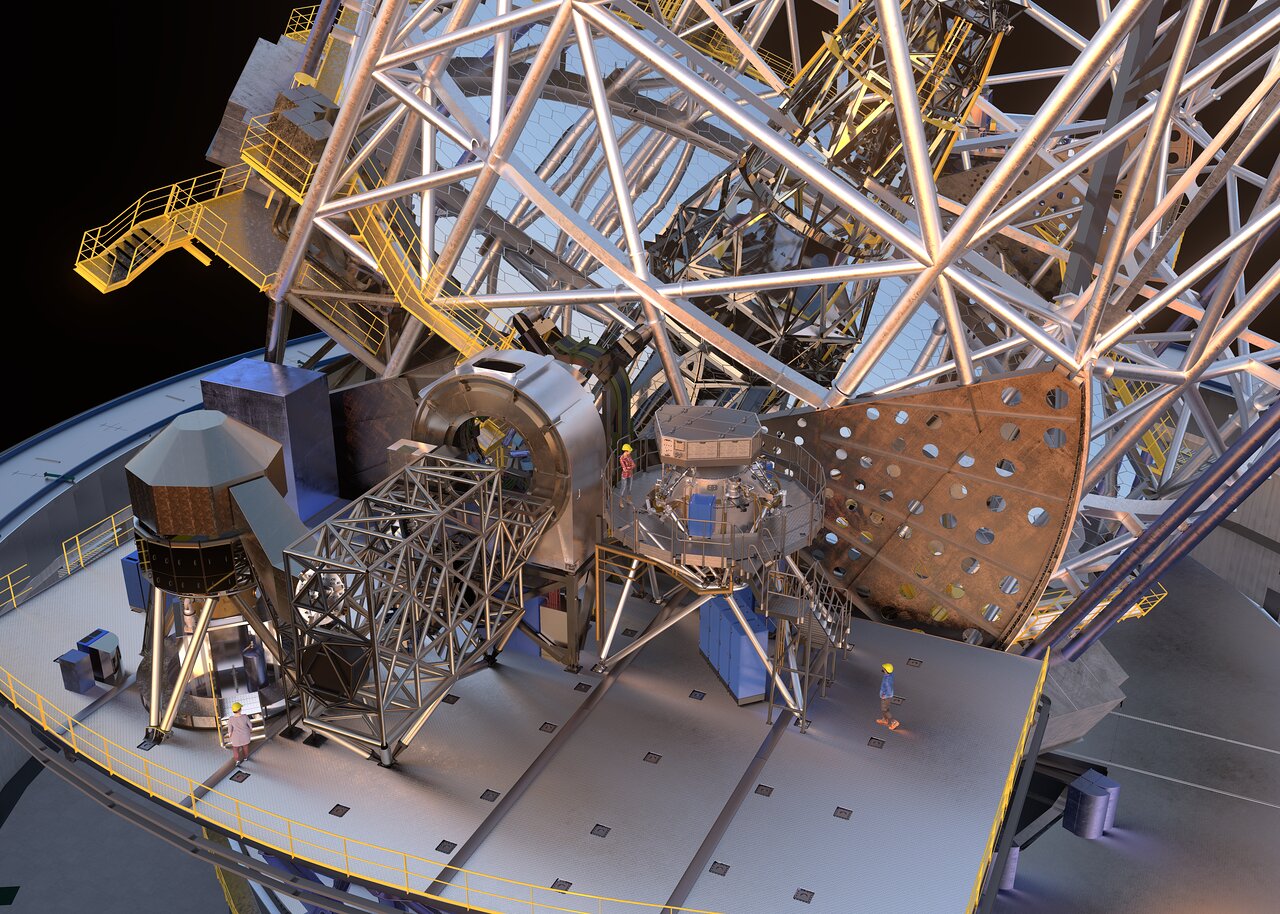The design of the ELT’s METIS instrument (ELT Mid-Infrared Imager and Spectrometer) is final. The European Southern Observatory (ESO) has given the green light to produce all parts of the device. METIS is an advanced multifunctional instrument that will operate on the European Southern Observatory’s future Extremely Large Telescope (ELT). It is the first ELT, designed and manufactured under Dutch leadership, that has officially passed final design evaluation. ELT is under construction in northern Chile.
Metis It is a first-generation instrument for the world’s largest eye in the sky – Elt – which means that it comes into effect as soon as, or shortly after, the telescope begins making its first observations. The device has a wide range of scientific purposes, from exploring the origins of our solar system to studying the centers of galaxies and the mysterious supermassive black holes located there. But METIS’ scientific priority is to study planet-forming disks and newly formed and nearby exoplanets.
The design process is one step on the path from concept to finished tool – a process that takes years for such large, complex and advanced tools. METIS has reached its first milestone in… Initial design review 2020The design of the main components of the device was then completed at the end of 2022. Now that the final design phase has been completed, it has become possible Alliance Continue the production phase for all parts of the device. The completion of the evaluation represents an exciting transition from describing METIS in technical documents to building, assembling and testing the instrument.
The METIS consortium is led by the Netherlands Research School for Astronomy (NOVA), with Prof. Bernhard Brandl from the Leiden Observatory as leader of the scientific project. In the Netherlands, the central optical system is being built at the NOVA Optics and Infrared Group in Doengelo. In addition, NOVA plays a critical role in all optical and mechanical aspects of the entire instrument. Production of parts has now begun. Within a few years, METIS in Leiden will be integrated with subsystems provided by other consortium partners. The device should be ready for shipment to Chile in 2028, where construction of the telescope itself will also be completed.
METIS is designed to perform observations in the mid-infrared. This makes the instrument ideally suited for studying cold or dust-covered objects. While thousands of degrees hot objects, such as our Sun, emit mainly visible light, cool objects, such as planets or dust clouds, radiate mainly in the mid-infrared. By analyzing light in this wavelength range, METIS will look at how stars and planets form in clouds of gas and dust, and can see through the dust at the centers of galaxies to study their supermassive black holes. In addition, METIS is expected to contribute to the search for habitable exoplanets by observing small, rocky exoplanets and analyzing the temperature, weather, and chemical composition of their atmospheres.
METIS is an advanced three-in-one tool. It contains a camera to take pictures of the sky, a spectrometer to divide light into its different colors or wavelengths, and a special device. Adaptive optical moduleWhich – in collaboration with the ELT’s adaptive telescope mirrors – can correct for disturbing disturbances in the Earth’s atmosphere. The complete instrument is placed in a cryostat, which maintains its temperature at minus 230 degrees Celsius or even lower, so that its heat cannot disrupt the infrared measurements.
To learn more about METIS and the people, technology and science behind it, watch the video »Learn about METIS, a multi-tool tool for teaching English‘.
The METIS consortium consists of NOVA (Netherlands Research School of Astronomy, represented by Leiden University), the Max Planck Institute for Astronomy (MPIA, based in Heidelberg, Germany), the University of Cologne (Germany), and the UK Astronomy Technology Centre. (UKATC, in Edinburgh, Scotland, United Kingdom), KU Leuven (Belgium), the Commission for Atomic and Alternative Energies (CEA) in Paris-Saclay (France), and the Center for Astrophysics and Gravitation (CENTRA, University of Lisbon). , Portugal), ETH Zurich (Switzerland), A* (Austrian collaboration represented by the University of Vienna, University of Innsbruck, University of Graz, University of Linz, Recam Linz, Austrian Academy of Sciences), University of Michigan at Ann Arbor (USA), and Academia Sinica Institute for Astronomy and Astrophysics in Taipei (Taiwan), and the University of Liège (Belgium), with contributions from the European Southern Observatory.
More images on the Dutch ESO webpage: https://www.eso.org/public/netherlands/announcements/ann24007/?lang
Leave
Metis in ESO
Metis in Leiden/Nova
ESO’s Extremely Large Telescope

“Thinker. Coffeeaholic. Award-winning gamer. Web trailblazer. Pop culture scholar. Beer guru. Food specialist.”









More Stories
Rewatch: Live 046 | 08/28/2024
Instagram now lets you add a song to your account
PlayStation Plus Essential Games Announced for September 2024